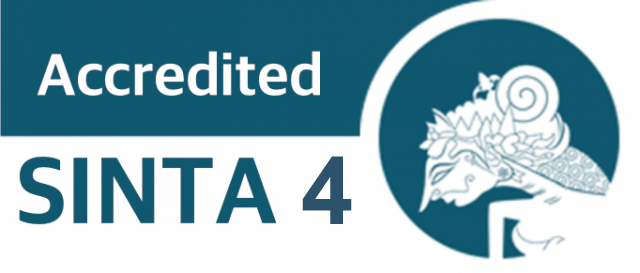Analysis of Learning Difficulties of Students in Biology Subjects in Junior High School
DOI:
10.29303/jpm.v20i5.9822Published:
2025-07-30Issue:
Vol. 20 No. 5 (2025)Keywords:
Biology Subject; Learning difficulties; Junior High School StudentsArticles
Downloads
How to Cite
Downloads
Metrics
Abstract
Students' learning difficulties are generally influenced by two aspects, namely internal factors and external factors. Internal factors involve a lack of interest in learning, a lack of natural talent in a particular field, and health problems that can hinder the learning process. This study aims to analyze the learning difficulties of eighth-grade students in biology at Satap Penmina Junior High School. Data analysis was conducted using descriptive qualitative methods, with data obtained from student learning outcomes and questionnaire responses. The analysis identified factors contributing to learning difficulties among students at SMP Satap Penmina, including both internal and external factors. Internal factors included health issues, self-readiness, and difficulties, while external factors included school facilities and family support. Based on the research findings, it was concluded that the factors causing students' difficulties in learning biology are internal factors such as health (32%), self-readiness (30%), and difficulties (32%) (low category). External factors include family (32%) in the low category and school (35%) in the moderate category.
References
I. Sanjaya, I. Indrayani, I. Ika, and H. Hevy, Strategi Pembelajaran Berorientasi Standar Proses Pendidikan. Jakarta: Kencana, 2013.
D. Harefa, "The Use of the Student Facilitator and Explaining Learning Model on Learning Outcomes," J. Educ. Dyn., vol. 14, no. 1, pp. 116–132, 2021.
A. A. Elwan, M. Serage, and A. Alwan, "The Institutional Factors Affecting The...," 2013. [Incomplete entry—please verify source.]
A. Rusilowati, "Profile of Learning Difficulties in Biology among High School Students in Semarang City," Indones. J. Biol. Educ., 2006, vol. 4, no. 2, pp. 4–2. [Check pagination]
Sugiyono, Research Methodology in Administration. Jakarta: Grafindo, 2007; E. E. Ukoh, "The Effect of Interactive Innovation Teaching Strategies on the Achievement of Prospective Physics Teachers and Mastery of Scientific Process Skills," J. Innov. Res. Manag. Humanit., vol. 3, no. 1, pp. 122–131, 2012.
P. D. Sugiyono, Research and Development Methods. Bandung: Alfabeta, 2015.
Sugiyono, Educational Research Methods: Quantitative and Qualitative Approaches, 2014. [Publisher not listed—please verify.]
D. Sawaw, A. Solehudin, and Sabri, "The Influence of Internal and External Factors on Student Learning Outcomes in Mechanical Engineering and Machine Elements," J. Mech. Eng. Educ., vol. 5, no. 1, pp. 21–26, 2018. [Online]. Available: https://doi.org/10.17509/jmee.v5i1.12615
Slameto, Learning and the Factors that Influence It. Jakarta: Rineka Cipta, 2012.
D. S. Prawiradilaga, Development of Teaching Materials for a Workshop on Content Design for Web-Based Learning. Jakarta: Prenadamedia Group, 2013.
N. Afni and J. Jumahir, "The role of parents in improving children's academic achievement," Musawa: J. Gender Stud., vol. 12, no. 1, pp. 108–139, 2020. [Online]. Available: https://doi.org/10.24239/msw.v12i1.591
Baharudin and Wahyuni, Teori Belajar dan Pembelajaran. Jakarta: Ar-Ruzz Media, 2015.
Rusmawan, "Faktor yang Memengaruhi Kesulitan Belajar IPS Siswa Sekolah Dasar," J. Cakrawala Pendidik., vol. XXXII, no. 2, 2013.
M. Dalyono, Educational Psychology. Jakarta: PT Rineka Cipta, 2007.
Ismail, "Diagnosis of Learning Difficulties in Active Learning at School," J. Educ., vol. 2, no. 1, pp. 30–43, 2016.
Dimyati and Mudjiono, Belajar dan Pembelajaran. Jakarta: Rineka Cipta, 2013.
N. D. Kiska, E. Haryanto, and I. Indryani, "Improving Students' Collaboration Skills Using the RADEC Learning Model in Elementary School Science Learning," J. Pijar MIPA, vol. 19, no. 2, pp. 240–247, 2024. [Online]. Available: https://doi.org/10.29303/jpm.v19i2.6606
S. Iskandar, "Analysis of the Effectiveness of the Literacy-Orientation-Collaboration-Reflection (LOC-R) Learning Model in Science Learning Activities of Islamic Elementary School Students," J. Pijar MIPA, vol. 19, no. 5, pp. 797–802, 2024. [Online]. Available: https://doi.org/10.29303/jpm.v19i5.7364
Slameto, Belajar dan Faktor-Faktor yang Mempengaruhinya. Jakarta: Rineka Cipta, 2013.
I. E. Prasetya, M. Yusuf, and T. J. Buhungo, "Description of students learning motivation towards the use of phet simulation in physics online learning in terms of self-efficacy and anxiety levels," J. Pijar MIPA, vol. 17, no. 1, pp. 23–28, 2022. [Online]. Available: https://doi.org/10.29303/jpm.v17i1.3218
B. S. F. Fortunela, H. Subekti, and W. B. Sabtiawan, "Application of experiential learning model to increase students motivation and learning outcomes," J. Pijar MIPA, vol. 17, no. 4, pp. 430–436, 2022. [Online]. Available: https://doi.org/10.29303/jpm.v17i4.3601
E. Satrianti, O. D. Pranata, and T. Tiara, "Science learning motivation among students at junior and senior high schools in Sungai Penuh: A Comparative study," J. Pijar MIPA, vol. 19, no. 1, pp. 20–26, 2024. [Online]. Available: https://doi.org/10.29303/jpm.v19i1.6101
Author Biography
Marince Inforsalina Leo, Biology Education Department, Institut Pendidikan Soe
License
Copyright (c) 2025 Marince Inforsalina Leo

This work is licensed under a Creative Commons Attribution 4.0 International License.
The following terms apply to authors who publish in this journal:
1. Authors retain copyright and grant the journal first publication rights, with the work simultaneously licensed under a Creative Commons Attribution License 4.0 International License (CC-BY License) that allows others to share the work with an acknowledgment of the work's authorship and first publication in this journal.
2. Authors may enter into separate, additional contractual arrangements for the non-exclusive distribution of the journal's published version of the work (e.g., posting it to an institutional repository or publishing it in a book), acknowledging its initial publication in this journal.
3. Before and during the submission process, authors are permitted and encouraged to post their work online (e.g., in institutional repositories or on their website), as this can lead to productive exchanges as well as earlier and greater citation of published work (See The Effect of Open Access).











